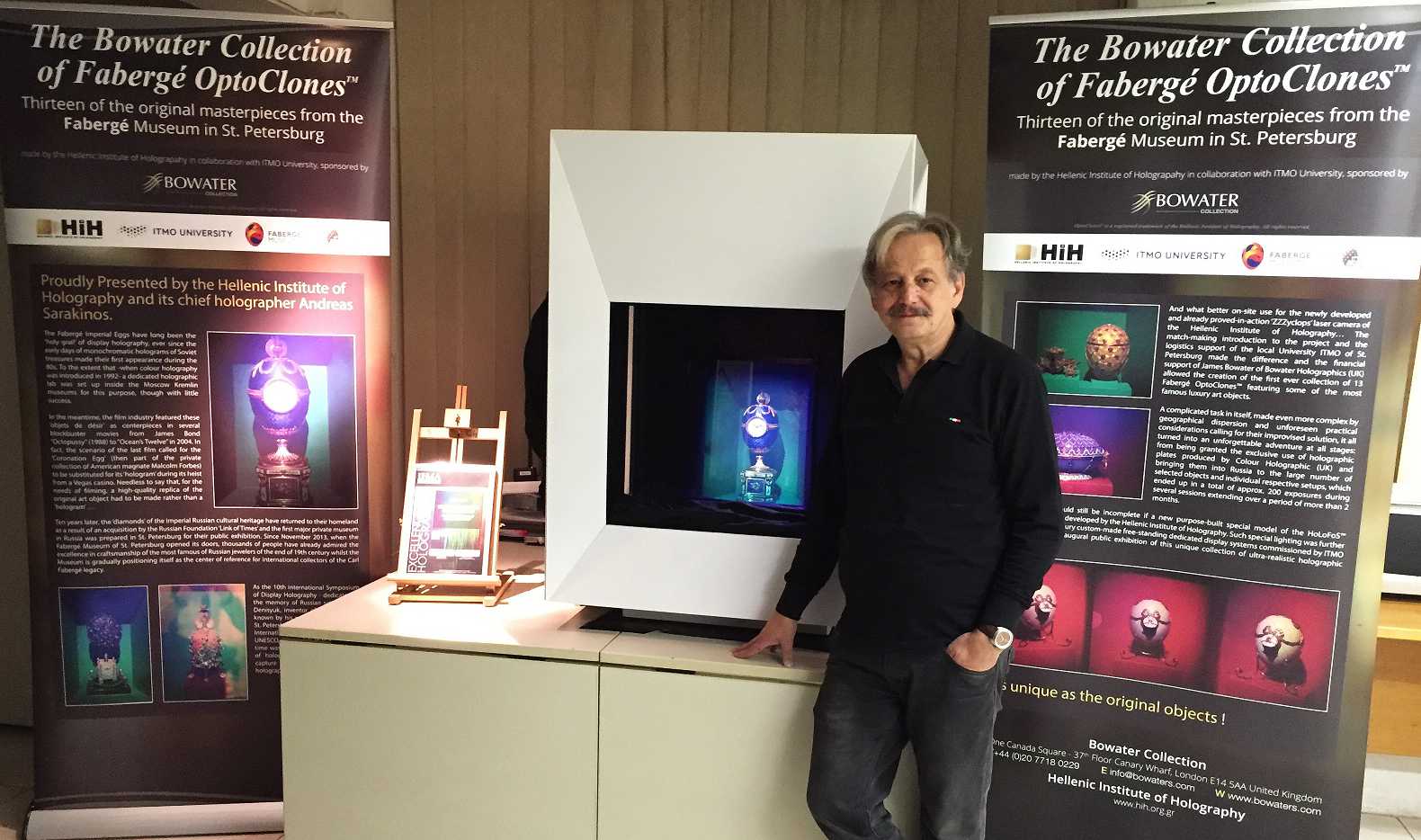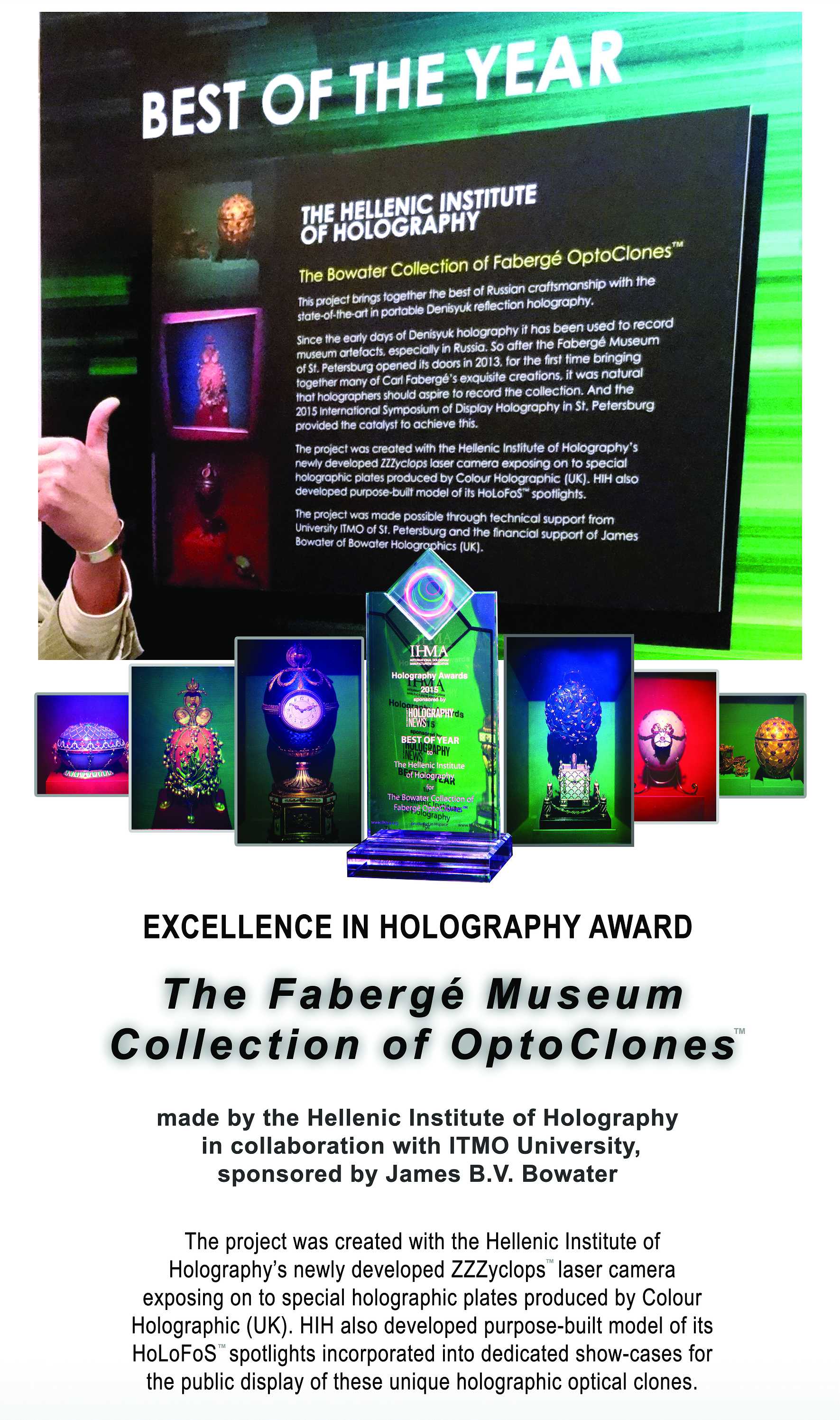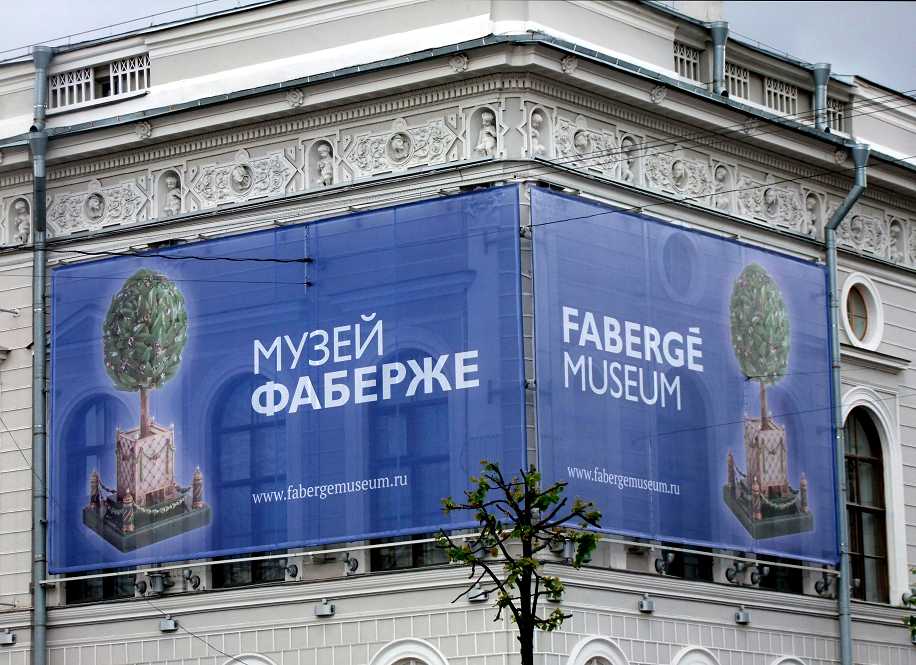The Collection of Holographic Optical Clones (OptoClones) of the Fabergé Museum in St. Petersburg
At the last annual meeting of the Int'l Associaiton of Hologram Manufacturers (IHMA) which took place in December 2015 in Shanghai, the Hellenic Institute of Holography (HiH) received the "Excellence in Holography - Best of Year 2015"award (see here the official announcement) for the creation of the Bowater Collection of OptoClones of selected artefacts from the Fabergé Museum in St. Petersburg, Russia.
The Fabergé Museum (enjoy a virtual tour here) opened to public for the first time in November 2013 and as the only thematic Museum in the world dedicated exclusively to the artistic genius of Carl Gustav Fabergé, it attracts the interest of worldwide experts. The Museum collection consists of more than 4,000 works of art and has at its epicentre 9 of the world-famous Fabergé Imperial Eggs, which -together with several other important pieces of artistic work from the laboratories of the Russian master- belonged until 2004 to the Forbes Foundation collection. Some of these priceless artworks have often been the source of inspiration for a number of books and Hollywood movies (James Bond Octopussy, Ocean's Twelve etc). The colllection was acquired by the foundation Link of Times for an undisclosed sum in the range of more than 100 million US dollars as part of a program for the repatriation of Russian cultural heritage. The signing of an agreement between the Fabergé Museum and HiH at the end of 2014 ...
... with the support of ITMO University of St. Petersburg was the starting point for an adventure which until now remained the unfulfilled dream of several generations of display holographers.
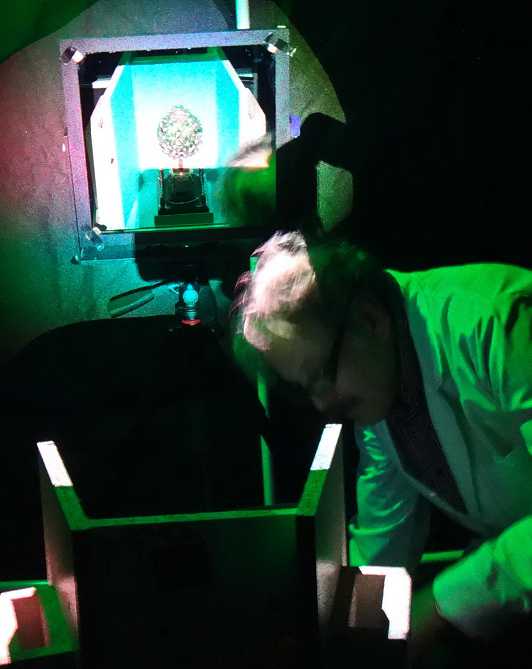
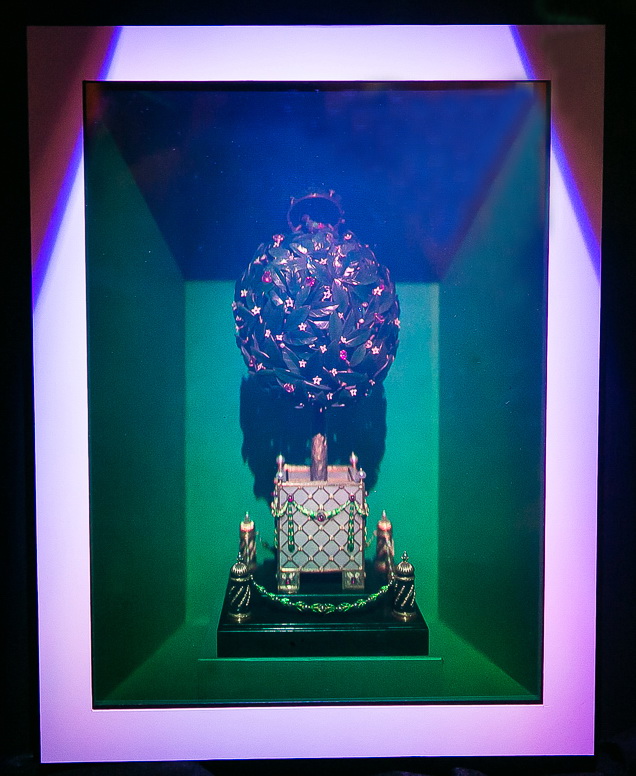 OptoClone of Bay Tree Imperial Egg OptoClone of Bay Tree Imperial Egg |
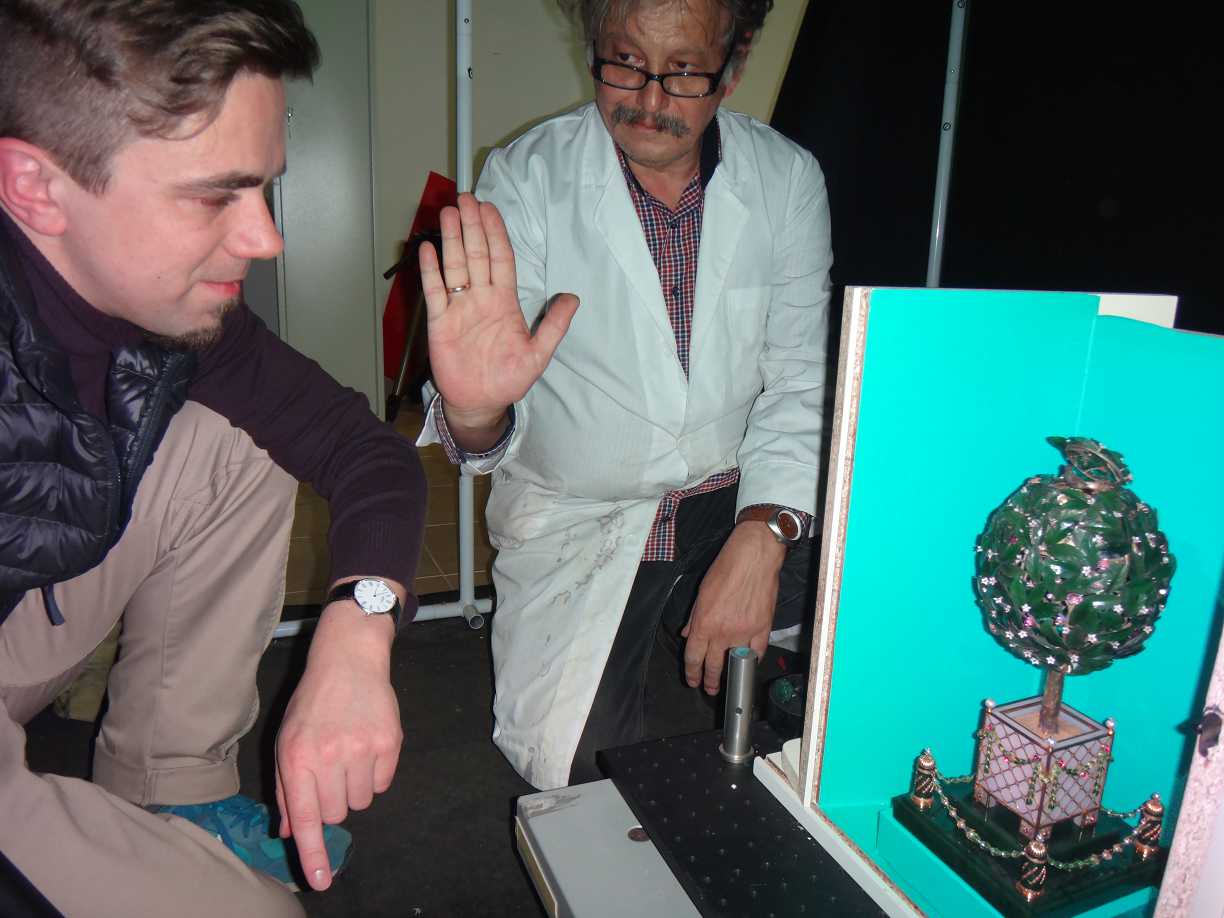 Alexey Pomigalov & Αndreas Sarakinos Alexey Pomigalov & Αndreas Sarakinos |
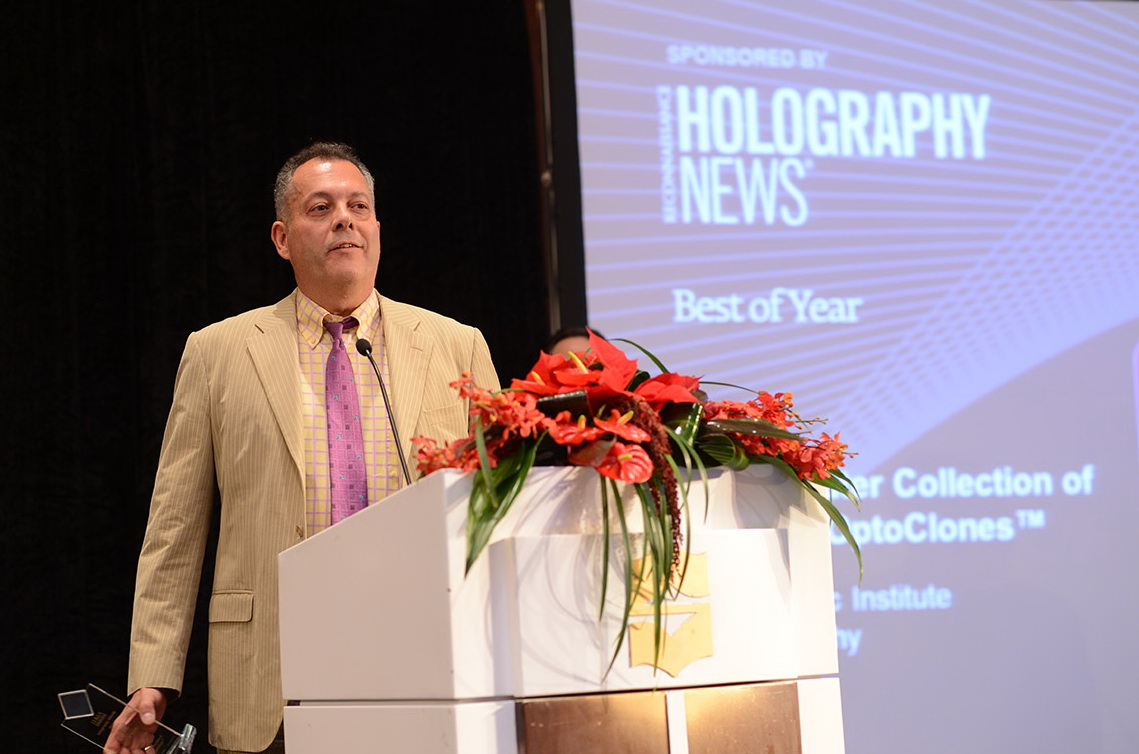 Alkis Lembessis at the Award CeremonyThe "IHMA Best of Year" award is not conferred annually unless there is an outstanding project fulfilling the high standards set by the judges. Consequently, its award to HiH for the creation of the Fabergé OptoClones was a special honour and it marked the culmination of 28 years of involvement of its partners in display holography. It must be noted that -apart from the production of these unique holograms- the award also refers to the way the necessary aspects of suitable presentation and illumination have been addressed in a concerted manner.
Alkis Lembessis at the Award CeremonyThe "IHMA Best of Year" award is not conferred annually unless there is an outstanding project fulfilling the high standards set by the judges. Consequently, its award to HiH for the creation of the Fabergé OptoClones was a special honour and it marked the culmination of 28 years of involvement of its partners in display holography. It must be noted that -apart from the production of these unique holograms- the award also refers to the way the necessary aspects of suitable presentation and illumination have been addressed in a concerted manner.
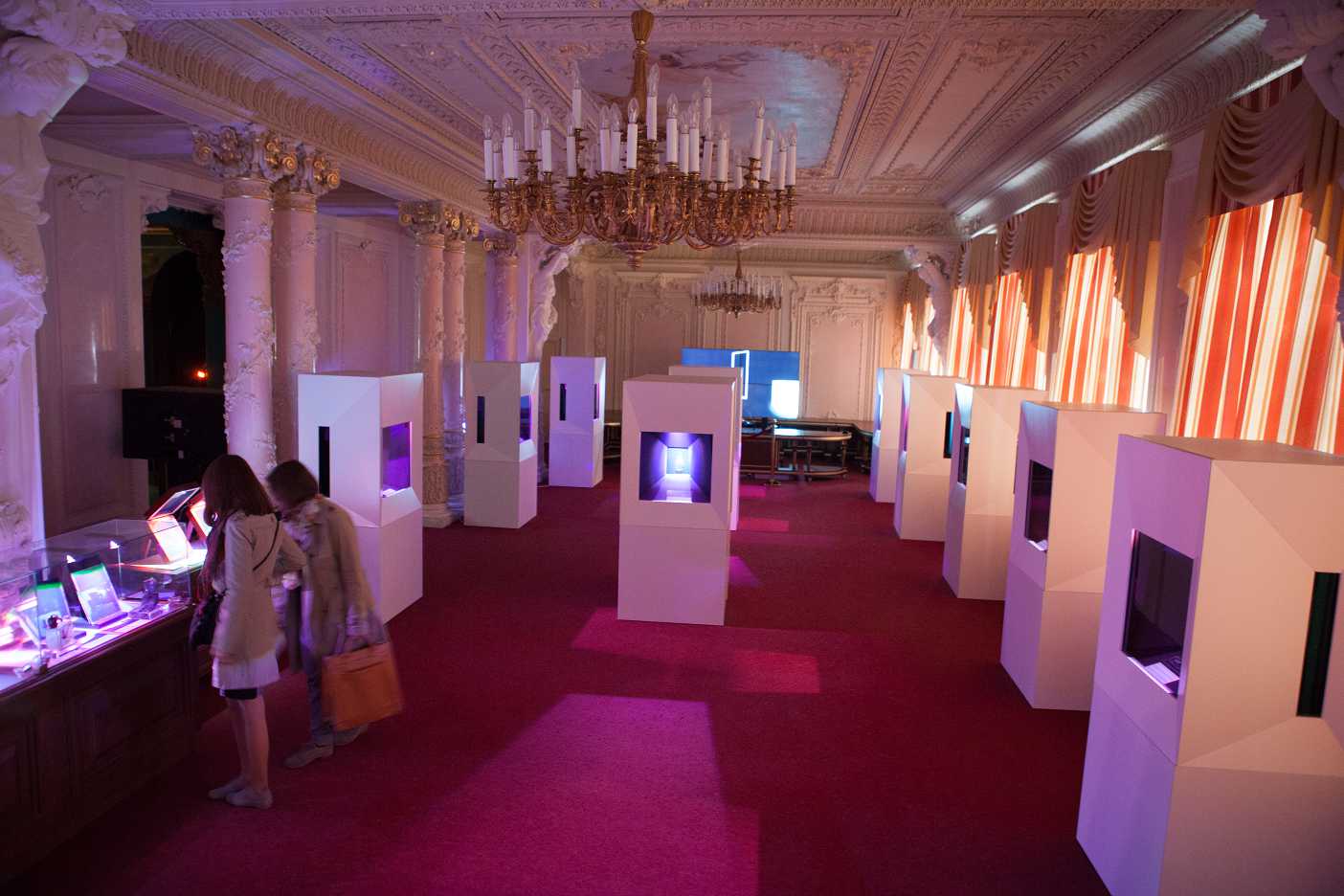 For the needs of the exhibition Magic of Light 2015 in St. Petersburg (hosted by ITMO University and co-organized by HiH), in which the first public show of the Collection of Fabergé Optoclones to more than 80,000 visitors took place, special showcases were designed and manufactured by the internationally awarded industrial designer Yannis Georgaras (2 Red-Dot awards) (view a 360 deg. panorama here). Within these purpose-built display systems, the latest model λ (2015) of the HoLoFoS illuminants developed by HiH research team for the optimal chromatic and realistic replay of such hologams was incorporated. Yiannis Georgaras, lecturer at Athens AKTO Schools, was again responsible for the design and 3D-printing manufacture of these novel RGB/LED illuminants. This holistic approach to holographic optical clones (i.e. the combined in-situ recording and their optimized illumination under controlled display conditions) was jointly presented at the end of February 2016 in the OPTO2016 conference organized annually as part of the Photonics West in San Francisco, USA (read it in PDF here).
For the needs of the exhibition Magic of Light 2015 in St. Petersburg (hosted by ITMO University and co-organized by HiH), in which the first public show of the Collection of Fabergé Optoclones to more than 80,000 visitors took place, special showcases were designed and manufactured by the internationally awarded industrial designer Yannis Georgaras (2 Red-Dot awards) (view a 360 deg. panorama here). Within these purpose-built display systems, the latest model λ (2015) of the HoLoFoS illuminants developed by HiH research team for the optimal chromatic and realistic replay of such hologams was incorporated. Yiannis Georgaras, lecturer at Athens AKTO Schools, was again responsible for the design and 3D-printing manufacture of these novel RGB/LED illuminants. This holistic approach to holographic optical clones (i.e. the combined in-situ recording and their optimized illumination under controlled display conditions) was jointly presented at the end of February 2016 in the OPTO2016 conference organized annually as part of the Photonics West in San Francisco, USA (read it in PDF here).
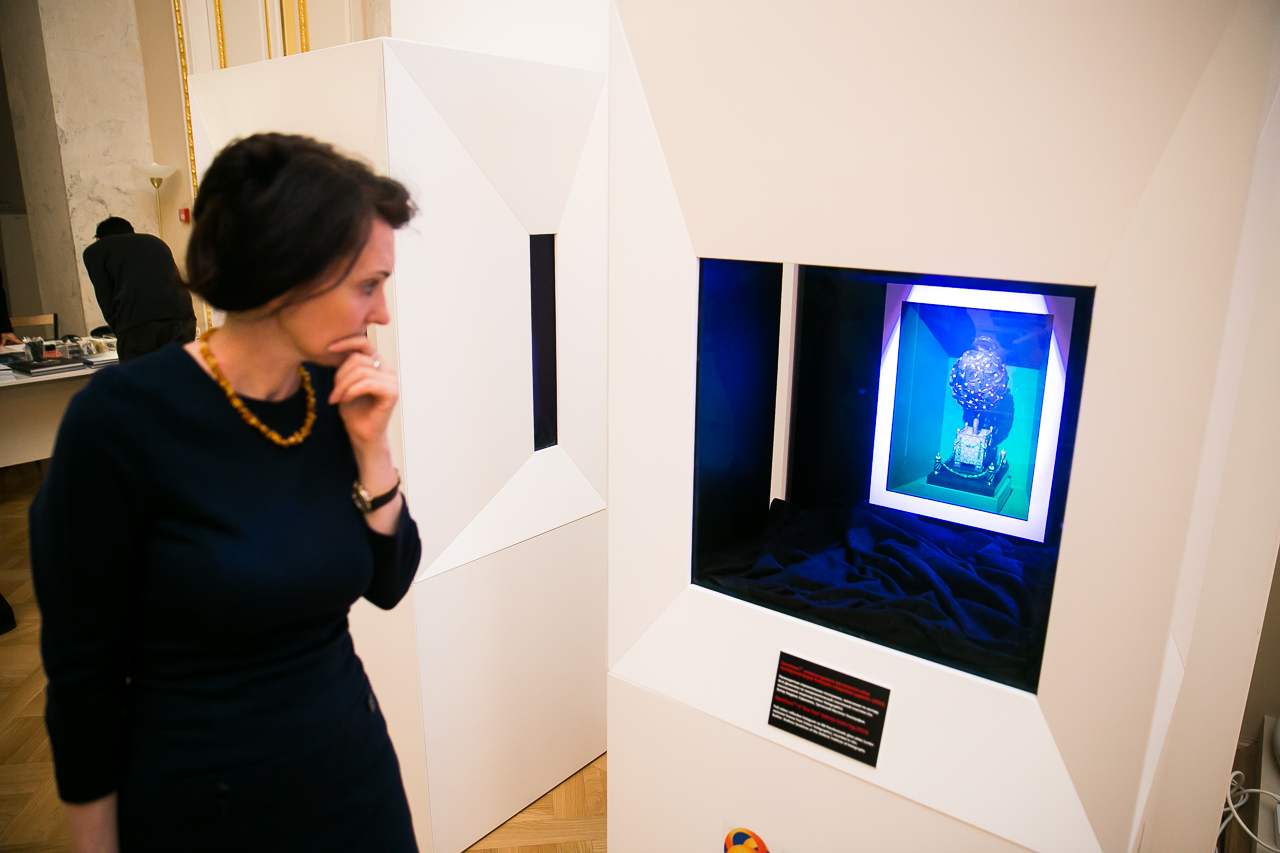
The details of this project already attract international attention and have already been presented at the meetings of world holographers Int'l Symposium on Display Holography (ISDH2015) and The Holography Conference 2015 in St. Petersburg and Shanghai respectively in July and September 2015. You may wish to appreciate the scientific and technical background as well as the logistic complexity of this venture by selecting one of the links below (in PDF):
But also the Bowater Collection of Fabergé OptoClones itself is becoming a point of attraction in its own merit. After St. Petersburg, the exhibition Magic of Light has now opened in the center of the city of Moscow where it is planned to run through summer 2016 before its departure for another destination. In parallel, independent presentations of the Bowater Collection (in full or partly) are scheduled in cooperation with either ITMO University or Fabergé Museum. One such event took place in Autumn 2015 within the context of the annual conference of Fabergé Museum on 'Lapidary Art' where international experts had the opportunity to appreciate selected OptoClones exhibited on the side of this event.
The ultra-realistic OptoClones are recorded on special panchromatic photo-sensitive high-resolution glass plates of fine grain, in a way resembling the early days of conventional photography. During holographic recording, HiH transports and installs its proprietary equipment at the Museum premises, where the selected artefacts are positioned on a special anti-vibration basis by the responsible conservators. The objects are exposed for few seconds in laser light of very low intensity passing through the holographic plate, on which the reflected light wavefront is recorded. The exposed plate is then developed, processed and dried (click on the adjacent 25" time-lapse video to witness the miraculous apparition of a hologram during drying process).
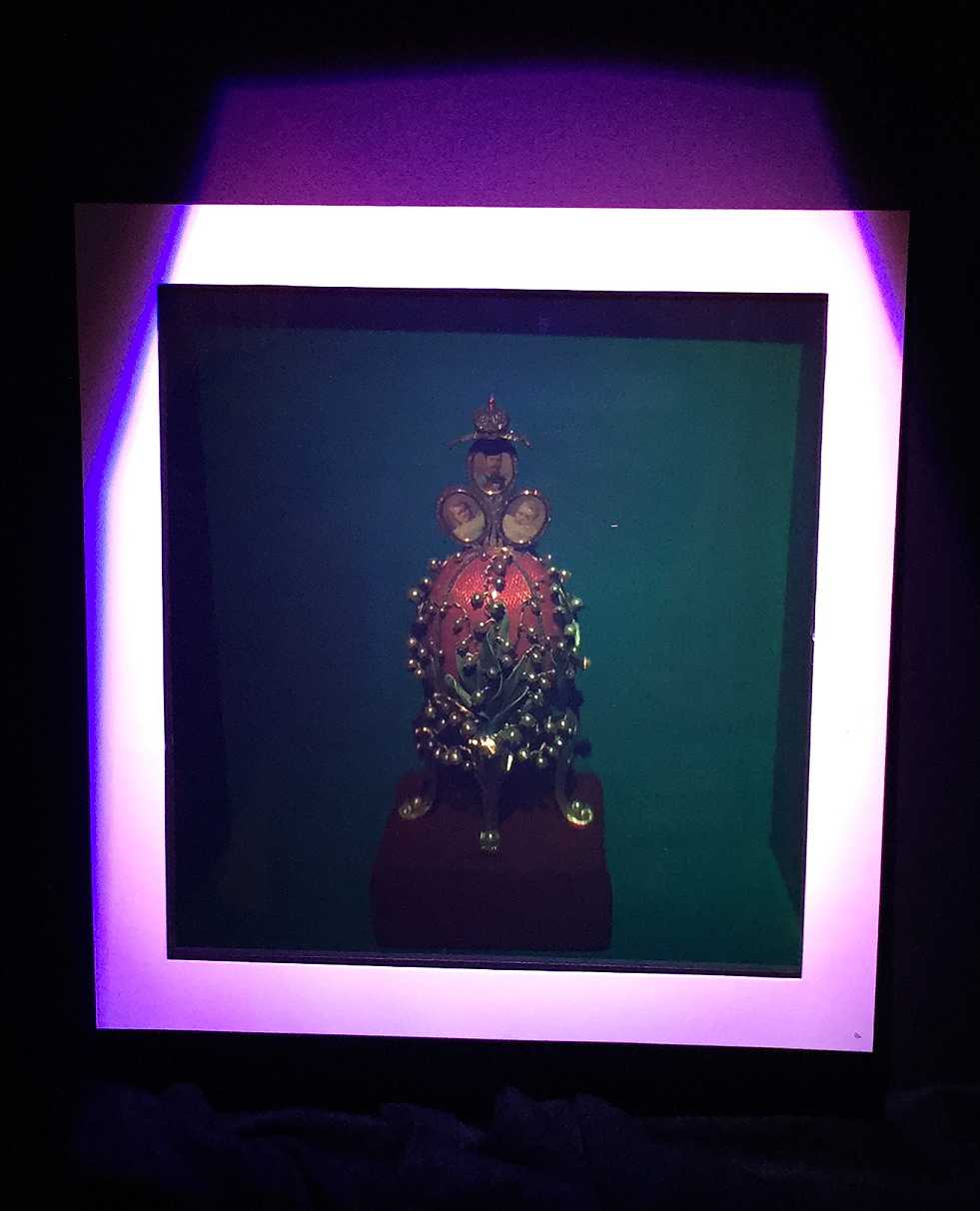
The unique analogue hologram derived in this manner, when properly lit, represents the original object in 1:1 scale and in every detail, at such a degree of fidelity that cannot be differentiated by the human brain. As a result, the HiH OptoClones can attract the attention not only of conventional technologically advanced viewers but also of visitors with a broader contemporary perspective in their cultural interests.
Naturally, photographs of these holograms (such as those shown on this page) cannot communicate either the real chromatic impression nor the analytical detail that only 'live' viewing can offer. OptoClones of this type are useful not only for the virtual exhibition of works of art but -more importantly- for the recording and documentation of their state before/after restoration, before/after temporary loans, for their safe comparative analysis and study, for educational purposes and many other practical applications.
As part of the in-situ holographic recording of the Collection of 13 Fabergé OptoClones in St. Petersburg (click on any of the photos below to see each one of them),
http://www.hih.org.gr/en/news/64-excellenceinholographyfaberge.html#sigFreeId8e6ca572ed
the Hellenic Institute of Holography was given the opportunity to holographically record in an optical clone two art objects of direct Greek historical interest selected from the permanent collection of the Museum. These two authentic personal items belonged to King George A' of Greece (1863-1913), brother of Russian Empress Maria Feodorovna and husband of Queen Olga of Greece. This is a perfect way for HiH to demonstrate the practical viability of the original concept and purpose of its transportable recording equipment for the use of display holography in documenting and putting together collections of Greek cultural heritage dispersed outside the country's borders.
The outcome of prospective cooperation plans in this sphere of activities will soon be presented publicly from this page in a separate announcement along with more exciting News from similar projects involving other cultural institutions. Subscribe to our Newletter so as to be among the first to learn about our multiple activities during this busy period ...
| < Prev | Next > |
|---|



